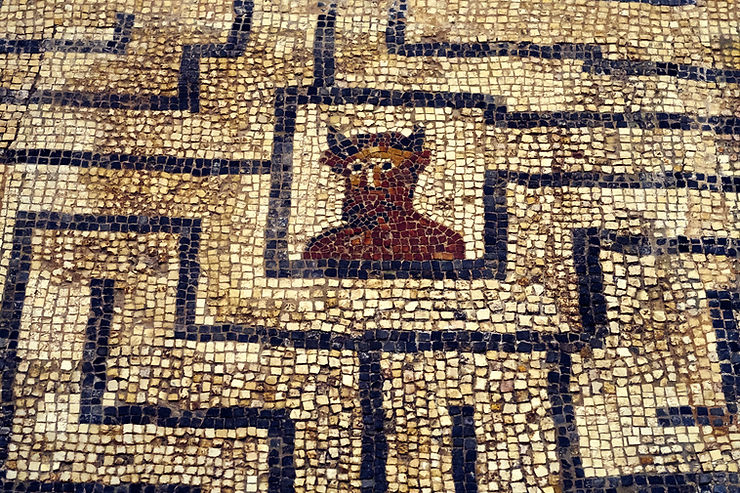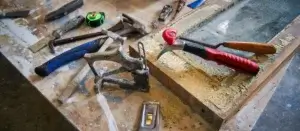
I went to look at a small, complex project the other day in an historic Tampa neighborhood called Hyde Park. The house stood out from all the others because of a particular style of window, something I would notice.
The windows were archetypal, a mixture of both the double hung and casement styles with a unique nine over one pattern- one large diamond surrounded by eight small triangles The bottom sash of the double hung set was a single lite with a large, single piece of glass, a nice contrast to the decorative assembly above it. The casement sash reflected the same design, only the pattern was contained within one large sash – making it a ten lite. Ingeniously simple and attractive, the nameless architect who first sketched the pattern was iconic.

Arming Myself With Questions
Knowing how to proceed in repairing, rebuilding and refinishing even a simple set of windows requires curious, yet serious investigation. Questions, based on previous battles both won and lost, flood my mind.
What are the site conditions? Do I really have to navigate those bushes? No shade? Please turn off the sprinkler system.
What is the paint condition? What is the sheen? Was it sprayed? Where is the water getting in? Is there any rot? Oh wow. It’s soft enough to stick my pencil in it.
What kind of hardware is attached? Is the hardware original, if it’s even there at all? Are those cabinet hinges? Who does that? Oh. They have Phillips head screws. Definitely not original. That could account for the Hardiboard trim their screwed to.
Where did the original hardware go? Can such hardware be sourced? If the original hardware is gone, are these windows even original? Were they taken from another source and installed here during some sort of renovation? Maybe this set of windows here is different than that set of windows there. Ah, I know. These were salvaged when they did that renovation in the 80s. I’m glad they saved them. Still, they’re installed all wrong. Why that stick covering up the joint in the middle?
Why two different profiles on two sets of windows in the same room? Does the client even realize they are different? Is that even important to the client? There’s a third profile in the kitchen? Ok. Now we have a mystery. Which is the original? Can I match this profile if I need to? Which do I draw from to build a replica if I need to? Maybe these were made by an altogether different set of artisans. Wow. Lots of history here. Big story to unpack. The client stops me. “What is a sash?”

What about the glass? Is it wavy? Was it scratched irreparably by unaware workers? Is it new glass? Has it been caulked in? What if I break a piece? Dang, I don’t think I have a piece that big on hand. Where can I source a piece that big? That piece over there is already broken. Is flat glass ok?
What presuppostions about the work does the client dwell on? Does he even know the caliber of what he has here? He didn’t even know what a sash is. Maybe hee just want a handyman to put some bubble gum on it? Maybe a little caulk? Some blue tape? Because that’s not me.
Financially, what would it take to safely and comfortably take on this project? Is the price I am thinking enough to pull this off? What am I missing? What am I not thinking about? Is my price in alignment with what the client thinks its going to cost? Am I asking for enough money to execute? How do I look at this job? With all the variables it’s so hard to tell.
It’s a small job. It’s really really hard to do a small job. Small jobs are big dragons. There’s not much room for error. Any major oversights and I’m dead. Dead again. Ask me how I know. If I fail to execute, how do complete the project and maintain my integrity?
So a job is not just “a job.” Done properly, it is a finessed work of art. That word, “Properly” is so subjective and debatable. Will it be my version or the client’s? When I go to the auto mechanic, I defer to his version. The plumber? Yes, we’ll do it his way. But then again I trust their judgment. Does the client trust my judgement? What experience do I have that I should be trusted? Has the client seen evidence of my competence? What if I am incompetent? The client will surely find out.
A job done properly best reflects everyone’s desired vision of the outcome, protects everyone’s interests involved and adequately provides the actual solutions necessary for every party’s ultimate satisfaction. It is the best possible solution applied to the problem to be solved, across all possible scenarios.
All too often, when projects are conducted, money is the primary aim. While money is important, the primary aim should be to solve the problem. Money is the tool that provides the space to complete the project. Bid too low and you’ll quickly run out of space. Bid too high and you don’t get the job. To bid in such a way that you have the space to do the project is complicated. Awarded the job, it’s up to you to organize your activities so as not to squander the project’s resources. Organized properly, you are rewarded well. Unorganized? To go back to the client and ask for more money because you were ignorant is unethical. If the client is agreeable to paying for your education, that’s one thing. But most were under the impression that you were competent and that you’d already paid for your education. It’s best to absorb the hit and take your lumps. Deceiving the client into believing you are more capable than you are can really burn the both of you. If your goal is merely to get the money, you may get it at the cost of losing your current and future client.
Types of solutions people come up with
Solution 1. Ignore it and hope it goes away.
Solution 2. Put some tape on it and cover it up.
Solution 3. Screw a board over the top and cover it up.
Solution 4. Caulk it and paint it so that nobody but you and the homeowner knows there’s an underlying problem.
Solution 5. Repair it with bondo, fuse everything shut and say “That’s what people are doing with this problem now.”
Solution 6. Repair the frames, sashes and have everything function as though it were newly installed on day one. Everything functions as intended, looks as intended, acts as intended and lasts as long as possible.
Solution 6 is the one everyone is looking for.
What is the solution for this window? I mean there’s some rot over here, the sash is compromised over there. The glass is broken up in the corner. Who actually knows until the day it’s opened up? I guess we shall see, no? Say hello to the labyrinth.
The Dragon in the Labyrinth

Who then is prepared to open up and see? AH! This is the scary part. For lying within that dirty, rotting window is a sleeping dragon, a dragon that could slay thousands of lesser individuals. Open up the window? You’re committed. The dragon is going to wake. You just picked a fight and agreed to slay a dragon. You are St. George.
Opening up a double hung? That’s straight forward enough. It goes up and down in tracks. How hard could it be? But don’t underestimate it. The dragons that live in double hungs have taken plenty of people out. But the dragons living within old casement windows? Those shoot an altogether different type of fire. Different colors. Different smells. Different intensity. Unbearable heat and they often come in pairs. You’ll need some armor.

Many, but the most naive, will attempt a casement without previous experience. They sag. They’re warped, twisted, cut, broken, rotten, and often paired together. To get these dragons tamed again to play nice together and guard the opening like they’re supposed to is no easy task.
Give yourself the title of “Master” or “Master Craftsman.” Write it on you cards. Put it on your website. Paint it on your truck. See if that works. Titles are a worthless facade, and this dragon proves it, no matter what you led the client to think. In the end you point to your contract and say “See? That part wasn’t ever included. Gotcha. Now give me my money.” It’s all just marketing, smoke and mirrors until you actually get the job. Deception doesn’t defeat dragons. Only tenacity, experience and skill.
What if, having walked through the labyrinth to the dragons’s lair, you realize your armor won’t withstand the fire? You’ve been found wanting? What if you wake the dragon and the dragon burns your skin off? What then? Are you to leave the dragons flying about, tethered barely by a rusty hinge, to the opening they were sworn to protect? They are disobedient children laughing hysterically and running uncontrollably around the kitchen, taunting the parent who has lost all control and mastery.
This person is not a master, but mastered, beaten down, defeated.
Ah, but you are smarter than the dragon, no? Yes. You may be, and would ultimately defeat such a foe, had you endless resources, endless lives in the video game. But this is not that. You would eventually find control over the children, to have them behave as told. But your purse is empty. Your gold is gone. Your throat is parched and your stomach pangs. You are out of time and resources. You are now paying the client to go to school – the price for wisdom and experience.
So there’s not enough money in the job to complete the project. Your incompetence and nakedness are on display for all to see.
Option 1. With your tail between your legs and your head hung low in shame, you plywood the opening in failure, temporarily penning the dragons for as long as possible, until another brave person raises his hand. You got burned, the client got burned, everyone got burned.
Option 2. Maintain your integrity and complete the job to the best of your ability, even if you lose money. You got burned but you protected your client. You walked away with scars but you took something with you. You learned respect for the dragon and the dragon learned respect for you. You earned the shirt that says, “Ask me how I know.” This way, even with your skin burned away, you begin to heal, resurrect and emerge from the flames like the Phoenix. Shadrach, Meshach and Abed-Nego.

I remember several occasions, taking on a small, complicated project, at whatever price I could procure it, solely for the experience of fighting dragons. Someone would put up a sign reading, “Reward for the person who solves this problem” Regardless of any fine print, I’d raise my hand. “I’ll fight the dragon, win or lose. Either way I’ll know where I’ll stand. I am one who believes.” I’ve seen it happen over and over. I might not make any money, but I’ll get my reward. Experience and wisdom are more valuable than gold.
What I learned by doing that, is that solving the initial riddle, learning the puzzle’s combinations, finding the path through the labyrinth, often takes a long and arduous time. Sometimes I’d mull over the question for hours, ponder for days, sometimes weeks, waiting for the answer to emerge and eventually, AHA! A right solution would present itself. Now I have it. It’s mine and I’m not letting it go. Repeating the puzzle a second time goes twice as fast. My way through the labyrinth blazes a trail. The third or fourth time? Blindfolded, I know where to step. I reach for and grab the right tool, in the right order, at the right time, applying the right force, giving me right action and right results. Every movement is studied, analyzed, mastered. I shake off unnecessary motions and consolidate right movements. It’s a game. It’s a romance. A sport. Martial Arts. Kung Fu. Confucius. Zen. Heaven on earth. Chaos has been ordered and the dragon is tamed, obedient like a well disciplined child, sitting at the table with nice manners. Please. Thank you. May I take your dish? The best of all possible scenarios. The client sings your praise and writes your name in the annals of history. An Artisan has been here. Pocket full of gold.
But then, sometimes there’s only one. Such is life with a small, complex job. What do you do when you only have one dragon? You have to fight it just the same, no? There’s only one dragon. Maybe two. Solving the puzzle is no less complicated. Finding the path through the labyrinth takes just as long. The sash with the diamonds doesn’t just lay itself out for the taking. He must be pursued, studied, examined, overtaken, digested, understood before being regurgitated. Mark my words. The first attempt at anything often resembles vomit. Try again and your upheaval might resemble the order you were looking for. Fail the first time? Of course! But how many tries can you afford on this small project? You must tread cautiously. You have not been this way before. There are thorns and briars, holes and ditches, darkness and cold in the way of finding all the angles, puzzling through the cuts before you arrive at your destination. Then, once you arrive at your destination, the ride is over. What of the practice? What of the further mastery? Alas! Quit while you are ahead! What does your client need? Are the dragons tamed? Perhaps. But there are more waiting in the next lair over. Collect your gold and go your way, satisfied that the armor acquired over countless previous battles has seen you though and enabled victory. You take with you a small part of every dragon you defeat. Dragons, known for their wisdom, disperse freely to those shown worthy. Be glad for your battles, large and small and fight hard, as dragons favor the brave and serve their masters well.




